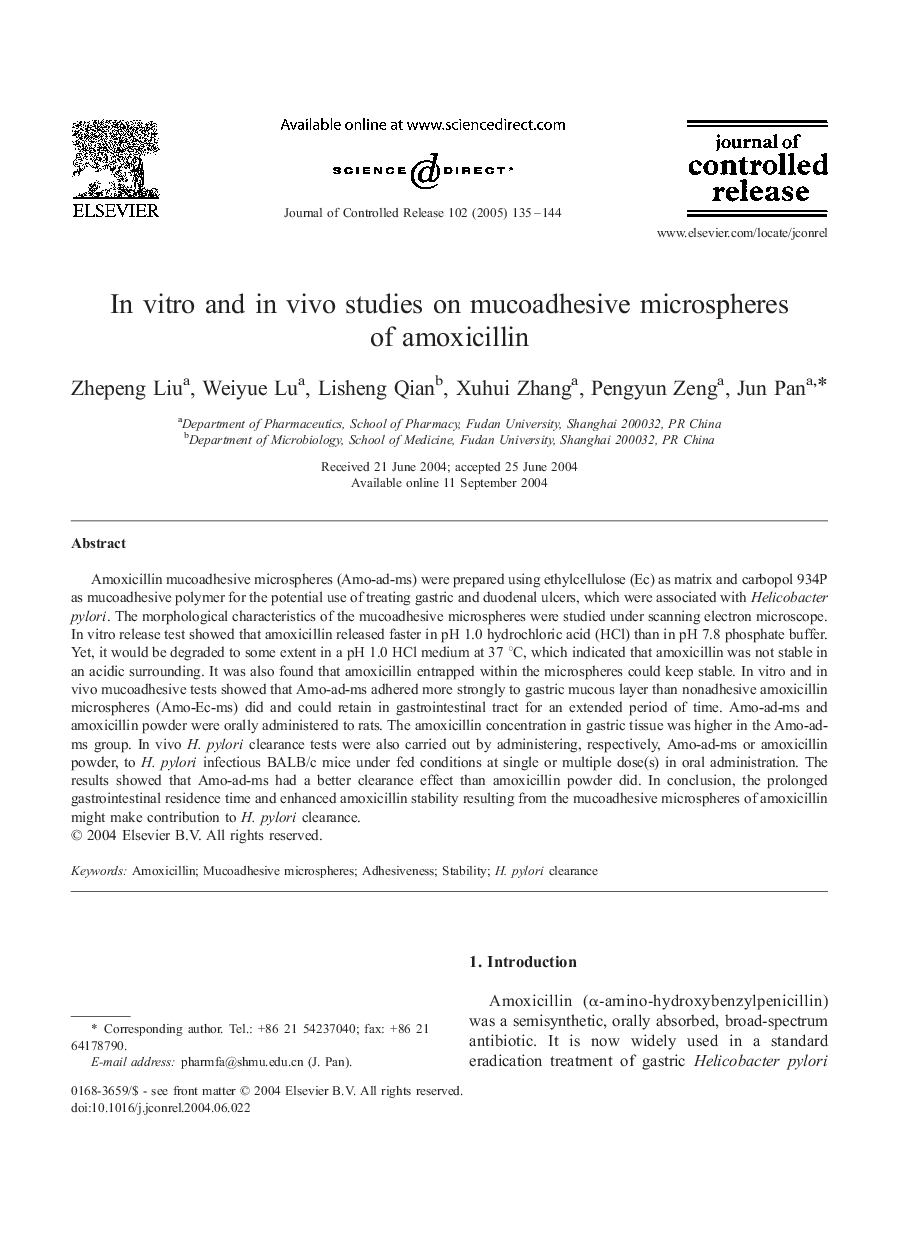| کد مقاله | کد نشریه | سال انتشار | مقاله انگلیسی | نسخه تمام متن |
|---|---|---|---|---|
| 10613532 | 986893 | 2005 | 10 صفحه PDF | دانلود رایگان |
عنوان انگلیسی مقاله ISI
In vitro and in vivo studies on mucoadhesive microspheres of amoxicillin
دانلود مقاله + سفارش ترجمه
دانلود مقاله ISI انگلیسی
رایگان برای ایرانیان
کلمات کلیدی
موضوعات مرتبط
مهندسی و علوم پایه
مهندسی مواد
بیومتریال
پیش نمایش صفحه اول مقاله

چکیده انگلیسی
Amoxicillin mucoadhesive microspheres (Amo-ad-ms) were prepared using ethylcellulose (Ec) as matrix and carbopol 934P as mucoadhesive polymer for the potential use of treating gastric and duodenal ulcers, which were associated with Helicobacter pylori. The morphological characteristics of the mucoadhesive microspheres were studied under scanning electron microscope. In vitro release test showed that amoxicillin released faster in pH 1.0 hydrochloric acid (HCl) than in pH 7.8 phosphate buffer. Yet, it would be degraded to some extent in a pH 1.0 HCl medium at 37 °C, which indicated that amoxicillin was not stable in an acidic surrounding. It was also found that amoxicillin entrapped within the microspheres could keep stable. In vitro and in vivo mucoadhesive tests showed that Amo-ad-ms adhered more strongly to gastric mucous layer than nonadhesive amoxicillin microspheres (Amo-Ec-ms) did and could retain in gastrointestinal tract for an extended period of time. Amo-ad-ms and amoxicillin powder were orally administered to rats. The amoxicillin concentration in gastric tissue was higher in the Amo-ad-ms group. In vivo H. pylori clearance tests were also carried out by administering, respectively, Amo-ad-ms or amoxicillin powder, to H. pylori infectious BALB/c mice under fed conditions at single or multiple dose(s) in oral administration. The results showed that Amo-ad-ms had a better clearance effect than amoxicillin powder did. In conclusion, the prolonged gastrointestinal residence time and enhanced amoxicillin stability resulting from the mucoadhesive microspheres of amoxicillin might make contribution to H. pylori clearance.
ناشر
Database: Elsevier - ScienceDirect (ساینس دایرکت)
Journal: Journal of Controlled Release - Volume 102, Issue 1, 20 January 2005, Pages 135-144
Journal: Journal of Controlled Release - Volume 102, Issue 1, 20 January 2005, Pages 135-144
نویسندگان
Zhepeng Liu, Weiyue Lu, Lisheng Qian, Xuhui Zhang, Pengyun Zeng, Jun Pan,